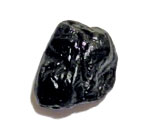Guidelines urged for children with HIV and high cholesterol levels
Posted by: admin on: September 30, 2011
Children with HIV have additional challenges that should be addressed with formal practice guidelines, according to an editorial published online
-Team@CMHF
- Denise L Jacobson colleagues monitored trends in cholesterol and lipid levels in 240 children who had HIV and high cholesterol.
- During two years of follow-up, the children had persistently elevated lipid levels.
- Cholesterol levels were more likely to decrease in children whose antiretroviral drug therapy was changed during follow-up.
- Although the study did not include information on why their ART changed, in most cases it was likely to control HIV levels, not in response to high cholesterol levels.
- Just 15 of the children were started on cholesterol-lowering statin drugs.
- Margaret P Rhoads and colleagues compared the effects of different types of ART drugs on lipid levels in 449 children with HIV.
- All classes of ART drugs were associated with increased cholesterol — although the increases were most significant for children receiving one specific class of ART drugs (protease inhibitors).
- During the five-year follow-up period, 10% of the children developed low-density lipoprotein cholesterol levels above the 95th percentile.
- However, just three patients had cholesterol levels high enough to call for drug treatment.
- Taken together, these findings suggest that HIV-infected children have additional challenges that must be considered before changing ART regimens to improve lipoprotein profiles, including possibly switching lipid-lowering agents instead of ART regimens.
- One striking observation in the Jacobson study was the low percentage of children with hypercholesterolemia who initiated lipid-lowering medications, particularly Statins, and the time with which it took to initiate a medication after development of hypercholesterolemia.
- Rhoads and colleagues observed 20 children who may have met AAP criteria for pharmacologic intervention during the study period depending on associated risk factors; yet, no child received any lipid-lowering medications, which was attributed to a lack of cholesterol guidelines specific to children with HIV.
- While the AAP calls for statin use for healthy children with LDL-C levels less than 190 mg/dL only after dietary interventions have failed these guidelines likely are not relevant to HIV-infected children
- Ross and McComsey advocated a combined approach consisting of a lipid-friendly drug regimen along with nondrug treatments (such as diet and exercise).
- Statin use may be used in the future, not only to improve lipids, but also as a means of further decreasing inflammation.
- Similarly, biomarker monitoring or initiation of anti-inflammatory medications may also prove to be beneficial
- Formal guidelines are the first crucial step in minimizing CVD complications and maximizing quality of life in this vulnerable population.
For further reading log on to
Search
- drchasrani: Difficult to get such a data, authenticated at that. Try Times of India online library
- rakesh pore: hi, where can i get genuine information about "10 most common drugs sold in india?" i want it for a local project
- nilesh dutta: sir, Plz give detail about MBA Sports Management Thanks and Regards


Leave a Reply